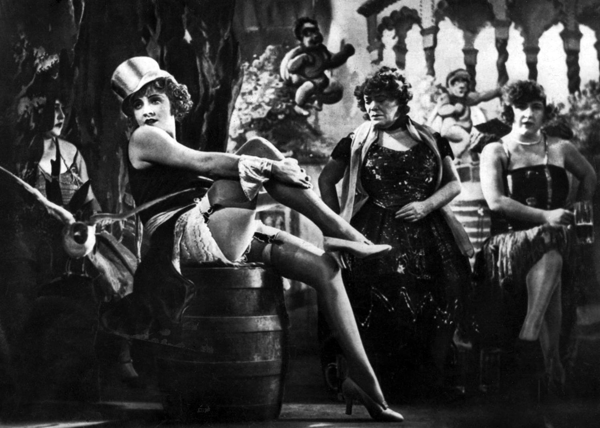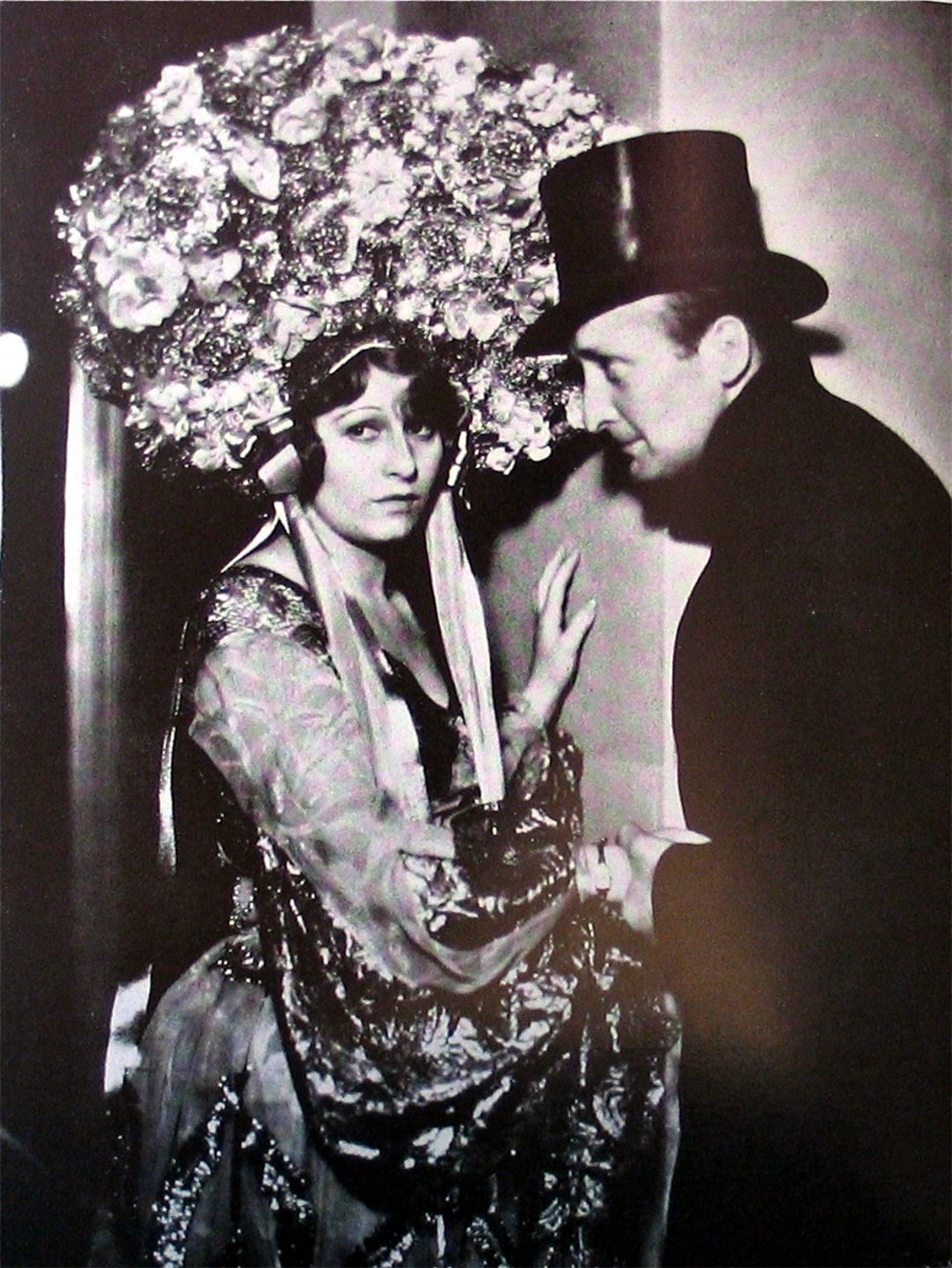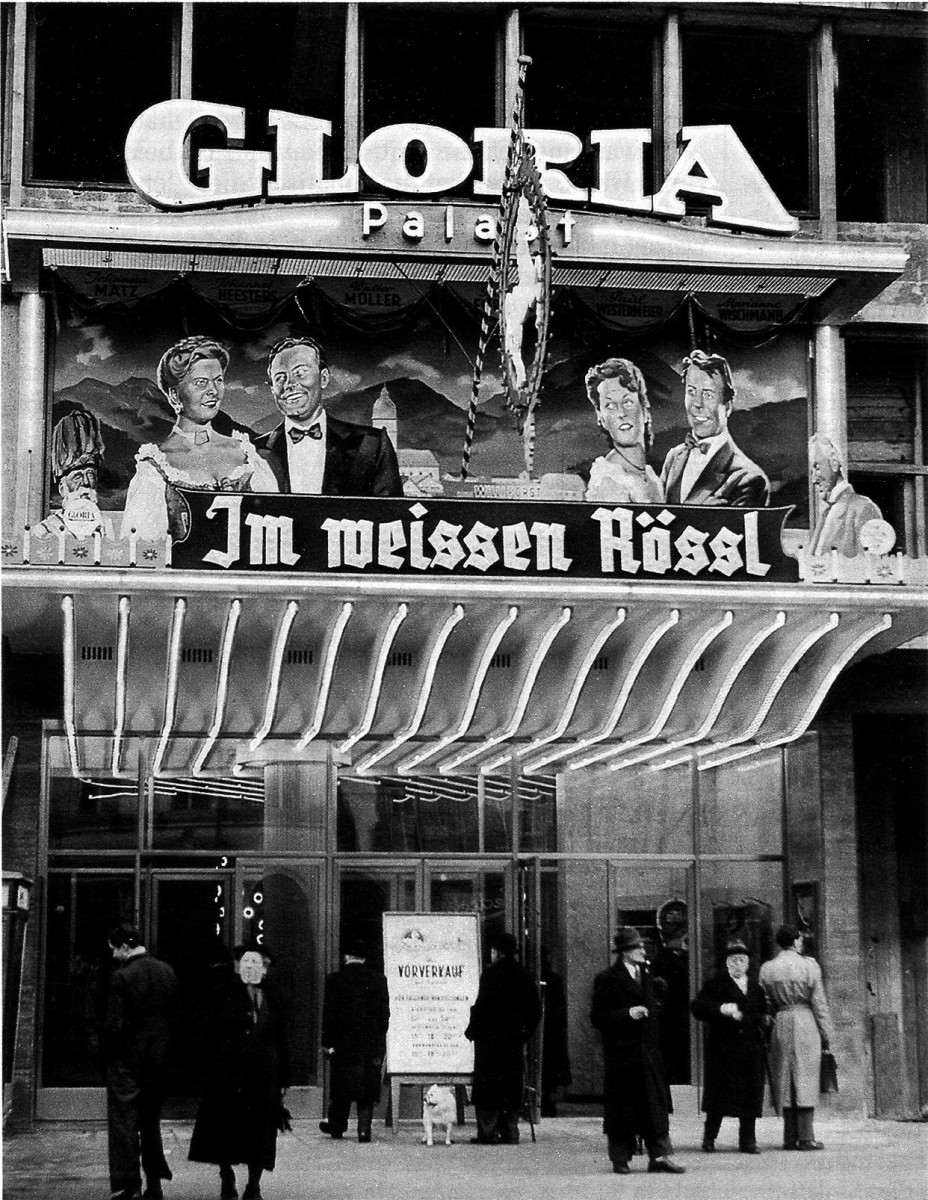Kevin Clarke
Operetta Research Center
1 April, 2020
Today, 90 years ago on 1 April 1930, the famous film Der blaue Engel premiered in Berlin’s Gloria Palace. It made a superstar out of Marlene Dietrich who had been discovered by director Josef von Sternberg – in an operetta!

Publicity photograph for the film “Der Blaue Engel,” 1930, featuring Marlene Dietrich. (Photo: Wikipedia)
When the film company UfA made plans to turn the novel Professor Unrat by Heinrich Mann into a movie, and when producer Erich Pommer hired US film director von Sternberg for this important project of an early sound movie experiment, von Sternberg was given free choice for his female lead. Even though UfA ideally wanted an established name.
But von Sternberg had other ideas for this tale of a bourgeois school teacher, famous for his high moral standards, who falls head over heels in love with a nightclub singer/prostitute and leaves everything behind to be with her, touring around with her theater troop as a clown, only the go mad when he catches his wife in the arms of another man. He breaks down and dies, in front of his old school building. It’s a brilliant parable of what happens with the morally righteous.
Von Sternberg had gone to see Hans Albers – the man who plays the new lover of Lola – in the theater in Berlin. It was a performance of Mischa Spoliansky’s operetta Zwei Krawatten, written with Georg Kaiser in 1929. It’s a “real life” story about a young impoverished waiter called Jean (Albers) who suddenly ends up with a winning lottery ticket which he finds after swopping his tie with a stranger, he also meets the blindingly beautiful American society lady Mabel (Dietrich) because of his new tie, who in turn makes Jean forget his sweetheart Trude. It’s a dark satire on the mechanisms of society and money, just like Spoliansky’s later Alles Schwindel which was recently successfully revived at Gorki Theater in Berlin.
Marlene Dietrich had already appeared in Erik Charell’s revues at Großes Schauspielhaus, where she was one of Charell’s “discoveries” playing next to the legendary Claire Waldoff and Wilhelm Bendow. (Dietrich got to play an almost nude and seductive “Eve” in an Adam and Eve sketch with Bendow.) The other big Charell discovery where the Comedian Harmonists as the world’s first boy band.

Poster for Charell’s revue “Von Mund zu Mund” showing Marlene Dietrich as Eve. (Photo: Archive of the Operetta Research Center)
Marlene Dietrich stole the show from everyone else in Der blaue Engel, much to the chagrin of the much more established star Emil Jannings. (Who was rumored to have been Charell’s first choice for Giesecke in Im Weißen Rössl 1930 but who turned the role down, even though Charell drove down to St. Wolfgang for a business meeting with Mr. Jannings who had a summer house on the opposite side of the lake.)
One of the reasons Miss Dietrich made such an impact in Der blaue Engel was the music, written especially for her by Friedrich Hollaender, son of famed operetta composer Victor Hollaender. Miss Dietrich gave a bravura performance as the irresistible red light lady that draws men to her like light attracting moths.
Der blaue Engel or The Blue Angel as it is known internationally became a mile stone of film history, and it was Dietrich’s ticket to Hollywood where she became one of the greatest screen legends of the 20th century. Sadly, she sang more Friedrich Hollaender songs in her later career, but no more operettas. Whereas Hans Albers returned to the genre, for example with a jazzed up version of Kalman’s Die Csardasfürstin at Admiralspalast with Rita Georg as his Sylva.

The jazzed up “Csárdásfürstin” at the Admiralspalast 1930, with Rita Georg and Hans Albers.
Marlene Dietrich’s particular style of operetta singing and acting could and should inspire modern-day people aspiring to make a splash in the genre. If you look at the cast of Alles Schwindel at Gorki Theater you can say: there are certainly young actors around who can pull off that stunt with gusto, even though none of them has been hired for operetta projects elsewhere so far.
By the way, in 1952 Charell’s film version of Im weißen Rössl – directed by Charell himself – also premiered at Gloria Palast in Berlin. Instead of the likes of Albers, Jannings or Dietrich you got Johannes Heesters and Johanna Matz, Walter Müller and Paul Westermeier as the “new” representatives of the genre. Times had changed, noticeably.

“Im weißen Rössl” at the Gloria Palast cinema in Berlin, 1952. (Photo: Archive of the Operetta Research Center)
Instead of a dangerous Miss Dietrich and a dashing Hans Albers as operetta heroes, the “great harmlessness” had come over the genre in post-war times. (In the case of the 1952 Rössl there is a noticable Charell twist, thankfully.)
That same year, Miss Dietrich filmed Rancho Notorious with Fritz Lang in the USA.
